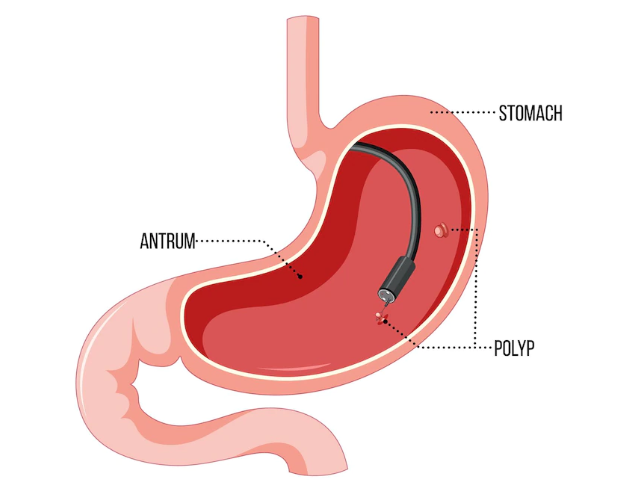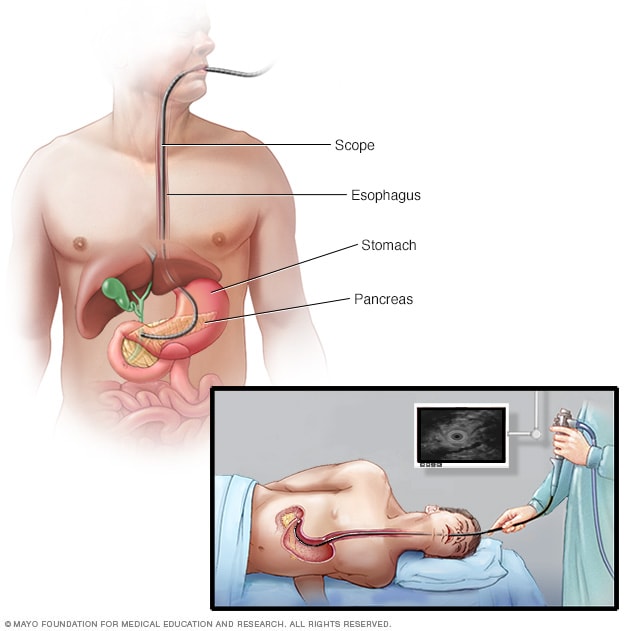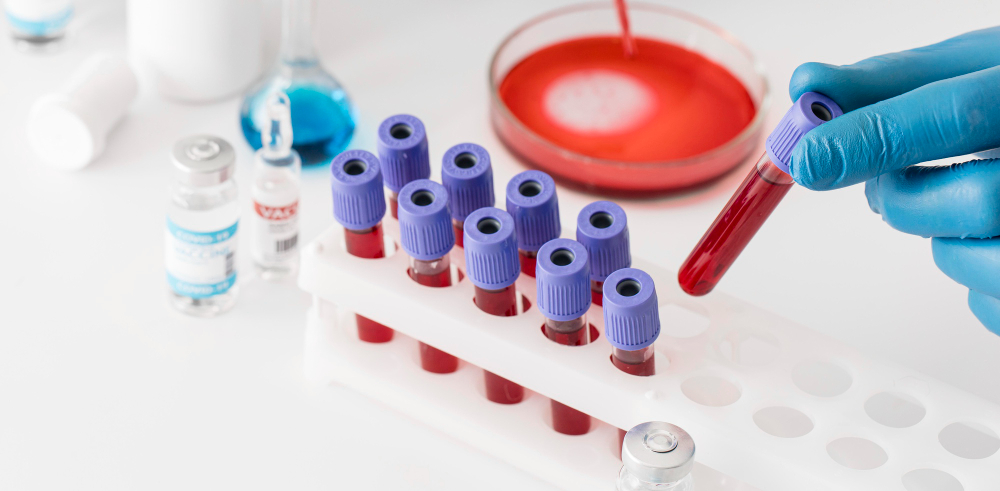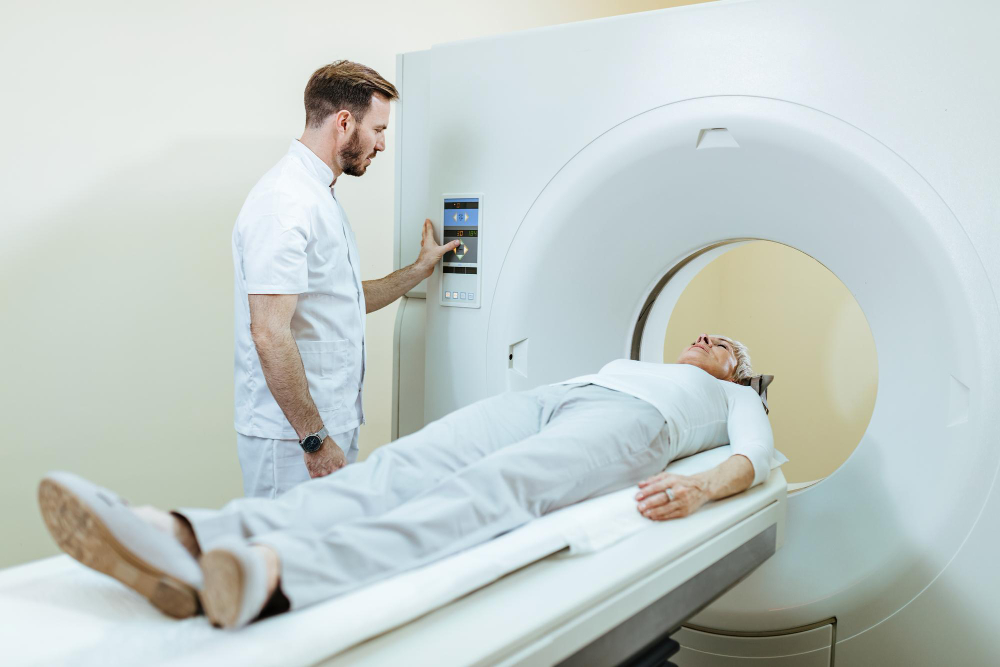Stomach cancer is an abnormal growth of cells that begins in the stomach. In most of the world, stomach cancers form in the main part of the stomach (stomach body). A cancerous tumour is a group of cancer cells that can grow into nearby tissue and destroy it. The tumour can also spread to other parts of the body. Common stomach cancer symptoms like unexplained weight loss and stomach pain often don’t appear in the early stages.
Symptoms
Symptoms of stomach cancer include:
- Loss of appetite
- Trouble swallowing
- Fatigue or weakness
- Nausea and vomiting
- Unexplained weight loss
- Heartburn and indigestion
- Black stool (poop) or vomiting blood
- Feeling bloated or gassy after eating
- Stomach pain, often above your belly button
- Feeling full even after eating a small meal or snack
Diagnosis
Upper endoscopy
An upper gastrointestinal (GI) endoscopy is the most common test used to diagnose stomach cancer. During an upper GI endoscopy, the doctor looks inside the esophagus, stomach and first part of the small intestine (duodenum) using a flexible tube with a light and lens on the end (called an endoscope). This test is also called an esophagogastroduodenoscopy (EGD).
Endoscopic ultrasound
The endoscope used has an ultrasound probe attached at its tip, that can take pictures of your stomach. It can show if the cancer’s spread from your stomach lining to your stomach wall.
Blood tests
Blood tests to measure organ function may indicate whether other organs in your body, such as your liver, may be affected by cancer.
Radiologic tests
A computed tomography (CT) scan uses special x-ray equipment to make 3D and cross-sectional images of organs, tissues, bones and blood vessels inside the body.
Magnetic resonance imaging (MRI) uses powerful magnetic forces and radiofrequency waves to make cross-sectional images of organs, tissues, bones and blood vessels. A computer turns the images into 3D pictures.
A positron emission tomography (PET) scan uses radioactive materials called radiopharmaceuticals to look for changes in the metabolic activity of body tissues. A computer analyzes the radioactive patterns and makes 3D colour images of the area being scanned.
Laparoscopy
Laparoscopy is a surgery that uses a laparoscope (a type of endoscope) to examine or remove internal organs through several small surgical cuts (incisions) in the skin.
Reference
Lee, S. (n.d.). Diagnosis of stomach cancer. Canadian Cancer Society. Retrieved July 15, 2022, from https://cancer.ca/en/cancer-information/cancer-types/stomach/diagnosis
Mayo Foundation for Medical Education and Research. (2021, April 27). Stomach cancer. Mayo Clinic. Retrieved July 15, 2022, from https://www.mayoclinic.org/diseases-conditions/stomach-cancer/diagnosis-treatment/drc-20352443
Stomach cancer: Causes, symptoms, diagnosis & treatment. Cleveland Clinic. (n.d.). Retrieved July 15, 2022, from https://my.clevelandclinic.org/health/diseases/15812-stomach-cancer





